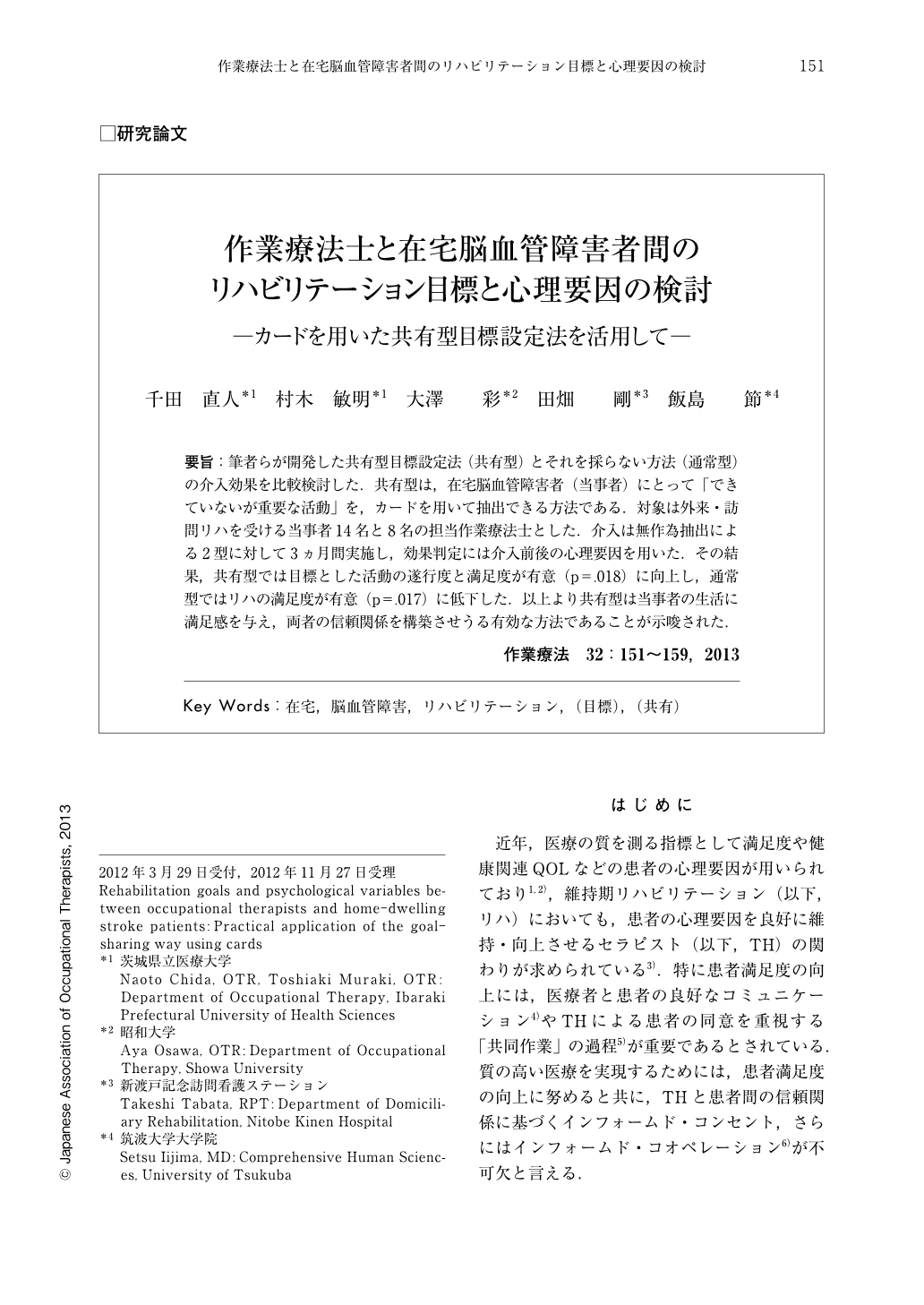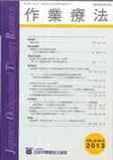Japanese
English
- 販売していません
- Abstract 文献概要
- 1ページ目 Look Inside
- 参考文献 Reference
- サイト内被引用 Cited by
要旨:筆者らが開発した共有型目標設定法(共有型)とそれを採らない方法(通常型)の介入効果を比較検討した.共有型は,在宅脳血管障害者(当事者)にとって「できていないが重要な活動」を,カードを用いて抽出できる方法である.対象は外来・訪問リハを受ける当事者14名と8名の担当作業療法士とした.介入は無作為抽出による2型に対して3ヵ月間実施し,効果判定には介入前後の心理要因を用いた.その結果,共有型では目標とした活動の遂行度と満足度が有意(p=.018)に向上し,通常型ではリハの満足度が有意(p=.017)に低下した.以上より共有型は当事者の生活に満足感を与え,両者の信頼関係を構築させうる有効な方法であることが示唆された.
Reports have indicated that therapists (TH) could not share common rehabilitation goals with their home-dwelling stroke patients (SP). The goal-sharing way (GW) has been developed to highlight “not-well-done-activities” for SP. The purpose of this study was to determine intervention outcomes of GW. Subjects comprised 14 SP (outpatient or home visit) and 8 occupational therapists. They were categorized into 2 groups: GW and the usual way (UW). The procedure for GW was to use cards based on ICF. A three-month intervention was conducted. Outcomes were measured using psychological variables between, before and after interventions. COPM increased significantly (p=.018) in GW. In UW, however, rehabilitation satisfaction decreased significantly (p=.017). In conclusion, the findings suggest that GW might be an effective way to both give SP's life satisfaction and improve the relationship in between TH and SP.

Copyright © 2013, Japanese Association of Occupational Therapists. All rights reserved.


